Acciona Trasmediterranea’s 16,686gt/ 2003 built Super Fast Galicia (above) finished her Trinidad & Tobago service on 14th April prior to returning to Europe for further operation with her owners. Her passenger capacity is due to be increased from 120 to 300 before re-entering service. The ship had been on charter for 3 years and with no replacement arranged. The company has also negotiated the purchase of the incompleted ferry Viking ADCC (sister to the 35,918gt/2008 built Viking XPRS). The new ferry will be delivered before the peak season of 2018 and will have a capacity of 1,500 passengers, 450 vehicles and 600 lanemetres for freight.
Atosim Lampung Pelayaran PT’s 151m long Ro-Ro passenger ferry Mutiara Persada III caught fire in the Sunda Strait near Palau Tundra Island, Indonesia on 9th April. The ferry was en route to Panjang from Jakarta with 76 passengers when a fire broke out on the car deck. The crew requested assistance and attempted to put out the blaze as it spread across multiple vehicles. ed up to the upper deck to wait for rescue. Rescue ships arrived a short time later and assisted in extinguishing the blaze. The 15,380gt/1991 built Mutiara Persada III was escorted back to Tanjung Priok.
Baleària has chartered the 10,488gt/1999 built Pauline Russ (above) to operate the freight only Algeciras-Tánger Med service. She replaces the 14,398gt/1994 built Llevant.
CalMac’s new ferry is the subject of a public naming vote. The shortlist has been put forward by the CMAL Board and the Scottish Government with help from the Clyde River Steamer Club to reflect the ferry’s Scottish roots. The ferry, currently known as Hull 801, is earmarked for Arran so all names are inspired by Arran’s history and geography. The shortlisted names are – Glen Sannox, Goatfell, Hutton, Glen Iorsa. The two new 102.4m long dual-fuel ferries being built will have a beam of 17m, a 3.7m draught, 3.7m, a service speed of 14.5/16.5 knots plus capacity for 1000 passengers, 127/132 cars and 16 HGVs.
C-Bed’s 8,893gt/1969 built Wind Solution (above) has been assigned to the Rampion Wind Farm project off Worthing, West Sussex, for floating accommodation. The vessel made her first visit to Portsmouth for stores on 25th April having arrived from Rotterdam.
Cobelfret’s first 60,000gt and 7,800 lanemetre capacity newbuild from the Hyundai Mipo Shipyard has been named Celine and will be delivered in summer 2017 for service on the company’s North Sea routes.
Elb-Link recommenced again on 22nd May across the River Elbe between Cuxhaven and Brunsbuttel using only the 5,233gt/2010 built Muhumaa (operating as the Grete) with the other vessel having gone on charter elsewhere.
HH Ferries Group dry-docked the 11,223gt/1993 built Tycho Brahe (above) in April for completion of battery conversion. The ship went to Landskrona after 18th April for completion of the remaining conversion and installation works to ensure that the ferry can be re-commissioned as a fully batteryoperated vessel on the Helsingborg- Helsingör route by the end of June. The 10,918gt/1992 built Aurora is scheduled for her treatment when the summer season draws to a close with the 4,296gt/1987 built Mercandia VIII replacing both the Tycho Brahe and Aurora during their respective dockings. The Tycho Brahe was scheduled for full re-commissioning on the route on 23rd May at which point a thorough test programme was conducted before the conversion to full battery operations is completed.

Moby Lines’ 9,279gt/1974 built Moby Niki (above) has been adorned with a new Batman livery prior to dry docking in Livorno. The repaired Moby Zaza, Moby Drea and Moby Vincent returned to service for the summer on 25th May with the Moby Otta, Moby Dada and Moby Bay following 26th May-1st June.
Montenegro Lines’ 8,697gt/1973 built Sveti Stefan II has been sent to Aliağa for scrappingas has the former IMTC ferry Atlas (6,767gt/1974 built, ex-Gelting Syd/Stella Scarlett).
NEL Lines’ 4,934gt/1996 built Panagia Parou sank at her berth by the stern in the port of Algeciras after a storm in April. The vessel had been abandoned for some considerable time after her operator, NEL Lines, ceased trading. The monohull fast ferry will surely go for scrap now.
P&O Ferries’ 31,598gt/1987 built Pride of Bruges suffered a technical problem overnight 10th-11th May en-route from Zeebrugge to Hull causing her to be considerably delayed into Hull. The vessel was then expected to be out of service for up to two weeks for repairs to be undertaken. The car carrier 19,094gt/1997 built Auto Bay was hastily chartered to cover the ship’s absence so as to keep freight traffic moving uninterrupted. The 22,986gt/1991 built European Seaway was packed off on her holidays to the Irish Sea on 1st May to act as refit relief vessel on the Cairnryan-Larne route, a first for this class of vessel. The ship made her service debut from Larne on the morning of 6th May.
Rederij Doeksen of The Netherlands has announced the names of the two new ships currently being built in Vietnam to enter service in 2018. With 1,592 suggestions the winners are the names of explorers from Rederij Doeksen’s operational area. They were pioneers, as are the new ships. Willem Barentsz (suggested 27 times), the name of the first Rederij Doeksen ship dating from 1908 and Willem de Vlamingh, an explorer from Vlieland who mapped much of the West Australian coast in the late 17th century. The LNG fuelled pair of catamaran’s will carry 64 cars and 600 passengers and will replace the 1,812gt/1974-built Midsland.
RMS St. Helena made a welcome return to her namesake island on 9th May following essential dry docking in Simonstown for repairs, where she had been since 19th April. The 6,767gt/1990 built ship was relieved on 19th April by the former Trinity House vessel Ocean Observer via a special arrangement to transport 10 passengers from Cape Town to St. Helena. The 2,820gt/1987 built Ocean Observer had diverted to St Helena on her way to Puerto Rico. As a survey ship the vessel could only take a limited number of passengers, therefore to comply with safety regulations the UK Maritime & Coastguard Agency would not give her approval to carry any more passengers on this voyage.
Scandlines has awarded Corvus Energy a 10-year long-term service and maintenance agreement for the entire Scandlines hybrid ferry fleet. The comprehensive multi-year contract includes both traditional service andmaintenance of the fleets’ energy storage systems, plus Corvus’ remote conditionbased monitoring service, WatchmanTM. Scandlines is very pleased to continue and expand the long partnership with Corvus Energy that began in 2012, since when their industry leading energy storage technology has become the standard electric battery power solution for all of our hybrid vessels. On February 5th 2017, Scandlines put their two newest Corvus powered hybrid ferries, the Berlin and Copenhagen, into regular service on their Rostock-Gedser route between Germany and Denmark. Along with the decreased environmental impact, the fuel consumption of the vessels has been reduced to almost one third per crossing per car compared to the previous ferries used on the same route. During the annual Shippax “Ferry Shipping Conference”, which was held on board Grandi Navi Veloci’s 49,257gt/2002 built ferry La Superba, 5th- 7th April 2017, the ferry operator also received an esteemed Shippax Award for its new 22,319gt/2016 built hybrid ferry Berlin.
Seaspan Ferries Corporation (SFC) of Canada officially welcomed two new dualfuelled/ hybrid ferries at a double commissioning ceremony held at the company’s Tilbury Terminal on 9th April. The two diesel/LNG and battery-powered vessels, the 4,810gt/2016 built Seaspan Swift and the Seaspan Reliant, are said to be the first ecoferries of their kind in North America. Following their construction at Sedef Shipyard in Istanbul, Turkey, the Seaspan Swift arrived in British Columbia in December 2016 and entered operation in January 2017, while the Seaspan Reliant arrived in late February and was scheduled to begin service in April. The 148.9m long ferries, which can accommodate up to 59, 53 foot trailers, mark the first new vessels added to SFC’s fleet since 2002. SFC currently operates a fleet of seven ferries out of five terminals in British Columbia and supplies more than 50% of all cargo to Vancouver Island.
Smyril Lines’ 12,670gt/2005 built Smyril was relieved by the 10,553gt/1979 built Galaxy in the Faroe Islands during the former’s refit 22nd April-15th May, making two round trips to Torshavn every day.
Stena Line’s former Ro-Pax ferry Trelleborg (20,028gt/1982), now renamed Sunny, has become Iran’s first cruise ferry since the Islamic Revolution. The vessel operates a four to seven-day domestic route between Qeshm in the Strait of Hormuz and Kish. Her registered owner and operator are Greek companies but her hull carries the logo of Karaneh Lines. Kish is a designated free trade zone and a major tourism destination, and Iran markets the island as a leisure travel competitor to Doha and Dubai.
Tirrenia was to have chartered the 21,801gt/2014 built Ro-Ro vessel Wedellsborg and the ship had been adorned in Tirrenia Lines colours during refit at Palumbo Malta Shipyard Ltd. in April. However, Tirrenia were later reported as having pulled out of the charter as she wasn’t delivered on time. Owners Visemar are also trying to sell the vessel. The company’s flamboyant ship liveries continue with the Nuraghes now sporting a Wonder Woman themed colour scheme.

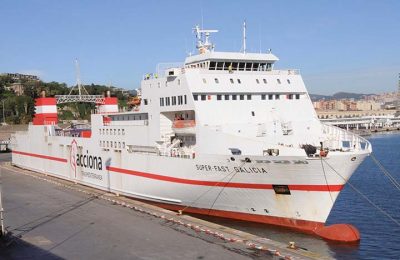
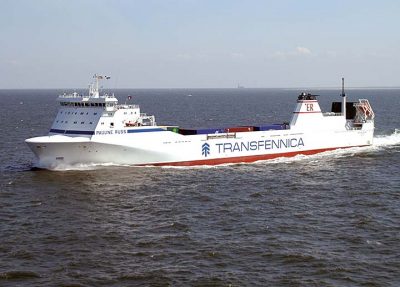
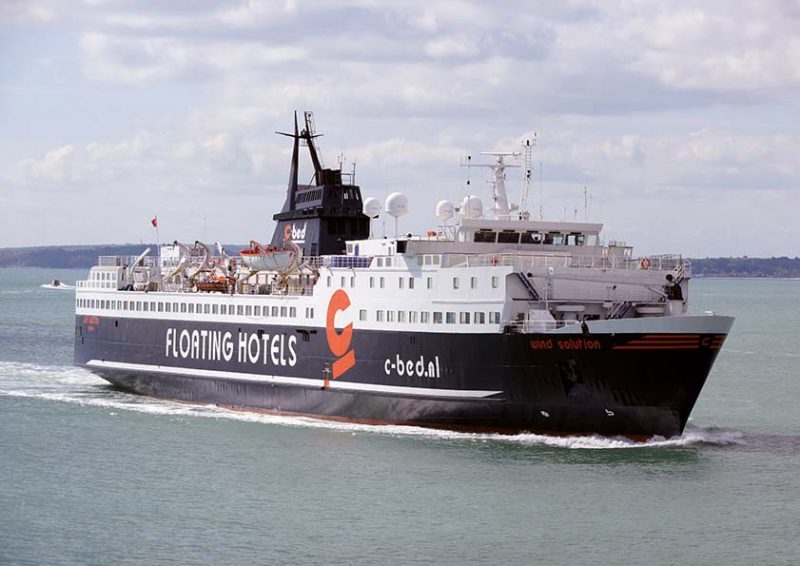
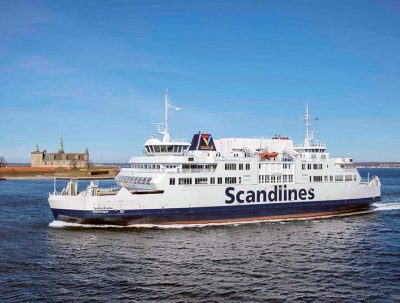
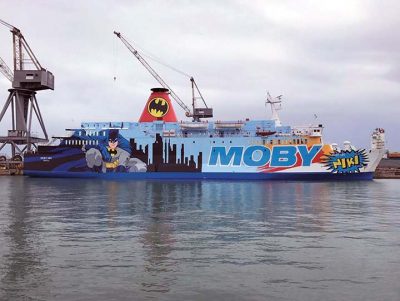
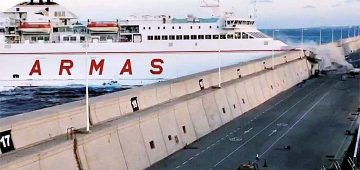



Comments
Sorry, comments are closed for this item